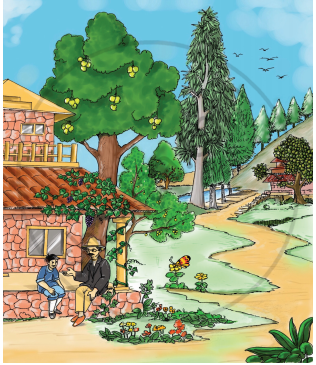Advertisements
Advertisements
प्रश्न
Aunt Jennifer's tigers prance across a screen,
Bright topaz denizens of a world of green.
They do not fear the men beneath the tree;
They pace in sleek chivalric certainty.
(a) Why are the tigers called Aunt Jennifer's tigers?
(b) How are they described here?
(c) How are they different from Aunt Jennifer?
(d) What does the word, 'chivalric' mean?
उत्तर
(a) The tigers are called Aunt Jennifer's tiger as they are knitted by her. With their chivalrous, ferocious, bright and carefree attitude, she creates an alternate world for herself.
(b) Aunt Jennifer's tigers are described as ferocious, fearless, always harmful, sleek and chivalric.
(c) The tigers are depicted as brave, strong, confident and happy. They are fearless beings and the presence of men does not scare them a bit. Contrarily, Aunt Jennifer is burdened by a life which, most probably, others chose for her.
(d) The word 'chivalric' refers to the confidence of the tigers about their power and brevity in their actions.
APPEARS IN
संबंधित प्रश्न
How does the poem emphasise the physical prowess of the Hawk?
Answer in your own words.
How did the plants respond when Revathi played her favourite tune?
State whether the following statement is True or False. Correct the false statement by finding evidence from the poem to support your remark.
The poem has an underlying message about the importance of trees.
Read the story and choose the appropriate meaning.
Wielded the brush ____________.
Match the terms in ‘A’ with their explanation in ‘B’.
| 'A' | 'B' | ||
| (1) | tooth- extraction | (a) | a cut made for surgery |
| (2) | cardiac | (b) | having length, breadth, and depth |
| (3) | sedative | (c) | plastic surgery |
| (4) | tumor | (d) | related to the heart |
| (5) | incision | (e) | a control unit for a robotic surgery |
| (6) | a console | (f) | removing a decayed tooth |
| (7) | 3-D | (g) | a substance that makes a person sleep |
| (8) | Cushing clip | (h) | an extra growth in the body |
| (i) | a device to stop blood loss in neurosurgery |
Say WHY. . . . . .
Ramanujan had to be hospitalized.
Read the following sentence carefully and choose the correct meaning.
Fine feathers don’t make fine birds.
Read the story and write about the following in short.
Kojo
How long a period did Shalihotra allow to find the missing things?
How did the students prepare for their stalls/presentations?
Complete the following sentence with reference to the passage.
They may be composed and sung or recited for many years before __________________.
Complete the following phrases with the help of the poem.
- ______ music
- ______ rivers
- ______ breeze
- ______ lake
- ______ citron-trees
Read the remaining part of the original story.
Say whether you agree or disagree.
The children showed disinterest even in the bachelor’s story-telling, throughout.
What is the difference between a 'dream' and a 'daydream'?
Make a list of your favourite fruits and vegetables and note down the time of the year when they are available in plenty.
Write what the following do, with the help of the poem.
ripples
Discuss the following in group.
Do’s and Don’ts for young children.
Choose a word that has at least four letters in it. Imagine that it is a short form. Write the name /phrase /words it stands for.
For example, STEP : Sunday and Thursday Evening Programmes.
Read the line and answer the question.
And all I ask is a windy day with the white clouds flying
Why does the poet ask for a windy day?
Listen to your teacher read the first part of the story. Many things described in the story can be seen in the picture. Find and name them.

Narrate the story based on the story map
How did the cavalry officers look? What happened to them finally?
What is the use of mechanical parts?
Circle and write the adverbs.
He laughed merrily ______.
Meena's village was hit by waves on a______.
What was the reason behind Nandhini’s dullness?
Do you think it is right for the tanker to take water? Why?
Match the rhyming words.
| 1. | earn | day |
| 2. | fend | learn |
| 3. | glow | end |
| 4. | play | slow |
How did he challenge everybody?
